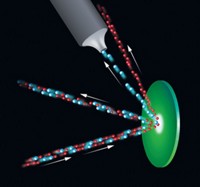Advertisement
Grab your lab coat. Let's get started
Welcome!
Welcome!
Create an account below to get 6 C&EN articles per month, receive newsletters and more - all free.
It seems this is your first time logging in online. Please enter the following information to continue.
As an ACS member you automatically get access to this site. All we need is few more details to create your reading experience.
Not you? Sign in with a different account.
Not you? Sign in with a different account.
ERROR 1
ERROR 1
ERROR 2
ERROR 2
ERROR 2
ERROR 2
ERROR 2
Password and Confirm password must match.
If you have an ACS member number, please enter it here so we can link this account to your membership. (optional)
ERROR 2
ACS values your privacy. By submitting your information, you are gaining access to C&EN and subscribing to our weekly newsletter. We use the information you provide to make your reading experience better, and we will never sell your data to third party members.
Synthesis
Rare-Earth Separations
November 15, 2010
| A version of this story appeared in
Volume 88, Issue 46
I was interested to note the reference to the Ames Laboratory at Iowa State University in the article about rare earths (C&EN, Aug. 30, page 9). I worked at the Ames Laboratory from 1950 to 1953 under Frank Spedding, the first director of both the Ames Laboratory and the university’s Institute for Atomic Research.
During World War II, Spedding’s group had quietly provided a substantial amount of the uranium used in the atomic pile at the University of Chicago. He was interested in the chemistry of the rare earths, which at that time were separated by laborious processes. He concluded that small differences in their dissociation constants should make them amenable to separation by ion exchange.
My first work was assisting in the evaluation of that technique, using 1-inch-diameter × 48-inch glass columns filled with Dowex-50 resin. Carefully controlled column preparation and elution conditions allowed the preparation of multigram quantities of high-purity rare earths for the first time by a simple process. Samples of high-purity oxides were supplied to many other research organizations, including other Atomic Energy Commission laboratories. By 1953, the demand had increased substantially, and banks of 6-inch-diameter × 10-foot-long columns were in use.
Jack L. Evans
Sun City West, Ariz.





Join the conversation
Contact the reporter
Submit a Letter to the Editor for publication
Engage with us on Twitter